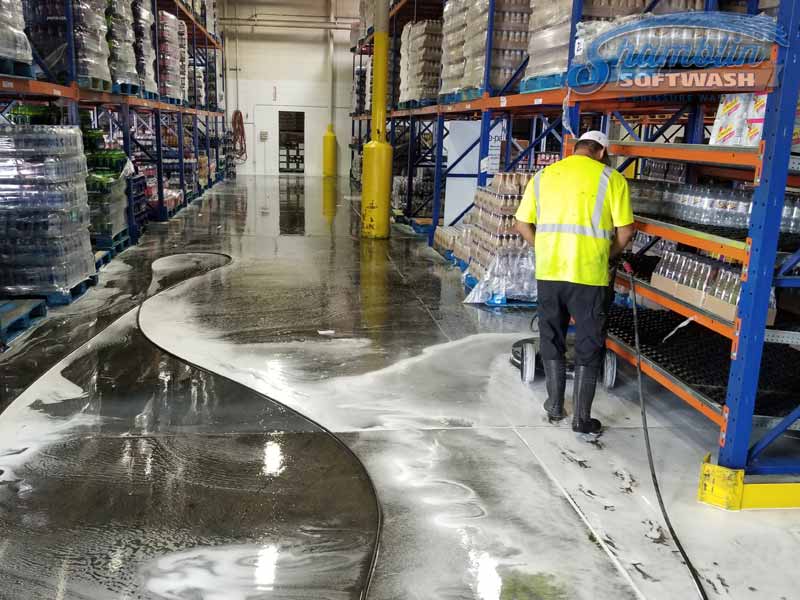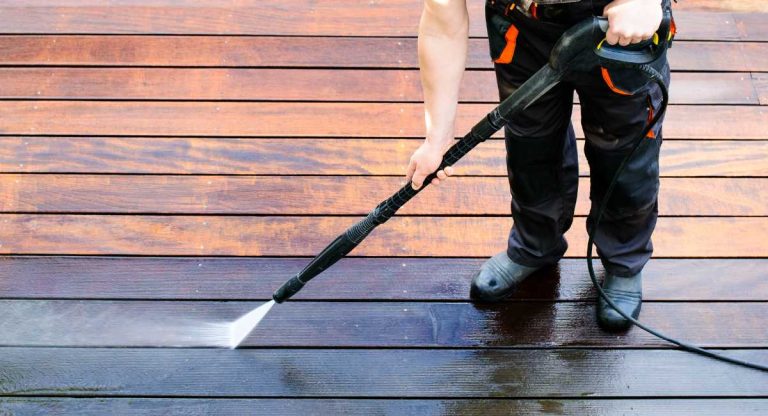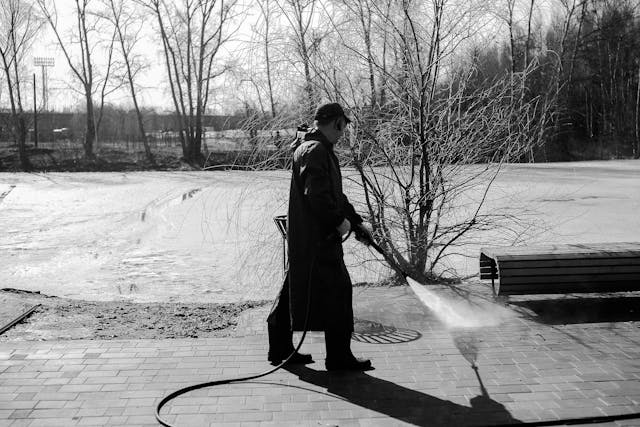
When most people think of power washing, they picture home exteriors, sidewalks, or parking lots. But in the world of commercial and industrial cleaning, interior warehouse power washing plays a critical role in safety, sanitation, and productivity. 🧼📦
Whether you manage a distribution center, manufacturing plant, or storage facility, keeping the interior of your warehouse clean isn’t just about looks—it’s about maintaining operations, protecting workers, and complying with regulations.
Here’s what you need to know when hiring a power washing company to clean your warehouse interior.
🧽 Why Power Wash a Warehouse Interior?
Warehouses accumulate a surprising amount of grime over time, including:
- Dust and dirt from inventory movement
- Grease and oil from forklifts or machinery
- Spills of food, chemicals, or hazardous materials
- Mold or mildew in high-humidity areas
- Tire marks and scuffing from heavy equipment
- Cobwebs and insect nests in rafters or corners 🕸️
These can lead to:
- 🔒 Slip hazards
- 💨 Poor air quality
- 🛑 OSHA or safety compliance issues
- 🏗️ Faster wear and tear on machinery and flooring
- 🚫 Product contamination
Hiring a professional crew ensures these issues are handled safely and thoroughly.
✅ What Areas Are Typically Cleaned?
A qualified power washing company should offer cleaning for:
| Area | Cleaning Focus |
|---|---|
| Warehouse floors | Degreasing, oil removal, scrubbing 🧽 |
| Loading docks | Heavy grime, tire marks, chemical spills |
| Storage racks and shelving | Dust removal, sanitation |
| Walls and baseboards | Mold removal, scuff cleanup |
| Ceilings and rafters | Cobwebs, dust, bird droppings |
| Machinery pads or work zones | Degreasing, safety zone delineation |
| Bathrooms and locker rooms | Sanitization, mildew control 🚿 |
Each area may require different equipment and techniques, which is why experience matters.
🧰 What Equipment and Methods Are Used?
Warehouse cleaning often calls for industrial-grade power washing gear and custom strategies, including:
🟢 Hot Water Power Washing
Essential for cutting through grease, oil, and industrial residue. Water is typically heated to 180–200°F.
🟢 Degreasers and Chemical Treatments
Used to dissolve heavy buildup and stains. Must be appropriate for the surface and safe for interior use.
🟢 Surface Scrubbers
Rotating cleaners that provide even, controlled cleaning of large floor areas without puddling.
🟢 Water Reclamation Systems
Capture wastewater to prevent pooling or runoff. Especially important when chemicals are used indoors.
🟢 Soft Washing for Walls and Painted Surfaces
Avoids chipping paint or damaging drywall or insulation.
Browse Amazon Here For Soft Washing Equipment And Accessories
💬 Questions to Ask Before Hiring
Not every pressure washing company is equipped for indoor commercial cleaning. Ask:
- “Do you have experience cleaning warehouse interiors?”
- “What methods and cleaners do you use on concrete floors?”
- “Do you use water reclamation or vacuum systems?”
- “Can you work overnight or on weekends to avoid disruption?”
- “Do you follow OSHA and safety guidelines while on-site?”
- “Are your cleaning agents safe around inventory or packaging?” 📦
A professional contractor should answer these confidently and provide a site-specific plan before beginning.
🛡️ Safety and Compliance Are Non-Negotiable
Cleaning warehouse interiors comes with unique challenges and liability concerns. The company you hire should be:
- 🧯 OSHA-compliant
- 🦺 Trained in working near forklifts, racks, and machinery
- 🛡️ Fully insured (general liability and workers’ comp)
- 📋 Able to submit a job safety analysis (JSA) or cleaning protocol
You should also confirm they follow fire and spill regulations—especially in facilities that handle flammable materials or chemicals.
🕒 Scheduling and Downtime Considerations
Power washing can disrupt workflow, so choose a contractor that offers flexible scheduling:
- Overnight or early morning hours
- Weekend availability
- Section-by-section cleaning to minimize downtime
- Coordination with your operations team
🚧 For 24/7 operations, consider scheduling in low-traffic windows and using temporary signage or barriers.
💵 What It Might Cost
Warehouse interior cleaning is usually priced based on square footage, condition, and complexity. Pricing may include floor scrubbing, degreasing, wall washing, and more.
| Area or Job Type | Estimated Cost |
|---|---|
| Small warehouse (under 5,000 sq ft) | $500 – $1,000 |
| Medium warehouse (5,000–15,000 sq ft) | $1,000 – $2,500 |
| Large facility (15,000+ sq ft) | $2,500 – $7,500+ |
| Equipment pad or work zone | $150 – $400 per area |
| Wall/ceiling cleaning (add-on) | $1–$2 per linear foot |
Additional fees may apply for heavy oil contamination, confined space access, or specialty disinfection.
📑 Service Agreement Must-Haves
Before approving a quote, make sure your agreement includes:
- ✅ Scope of work for each area
- ✅ Floor-to-ceiling detail (if applicable)
- ✅ Type of cleaners used
- ✅ Wastewater management plan
- ✅ Hours of operation
- ✅ PPE and safety protocol usage
- ✅ Site access instructions
It’s also wise to have your facility manager review the plan with the crew on-site before starting.
🧼 Final Thoughts
Warehouse interiors demand more than just a mop and bucket. They require a strategic, industrial-strength approach to cleaning—one that balances efficiency, safety, and surface protection.
Hiring a qualified power washing company means your space gets cleaned properly without interfering with operations or risking property damage.
Don’t settle for a generalist. Choose a contractor who understands industrial spaces, comes equipped for the job, and respects the rhythm of your business. 🏭🧽
Clean spaces don’t just look better—they work better too. ✅
Browse Amazon Here For Top Rated Power Washers And Accessories






